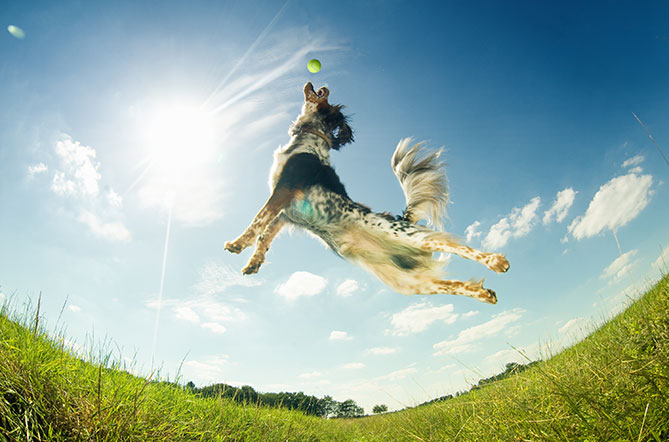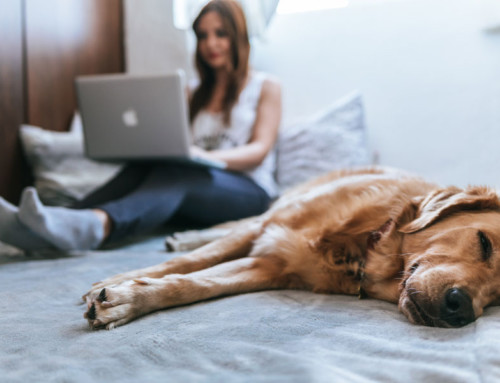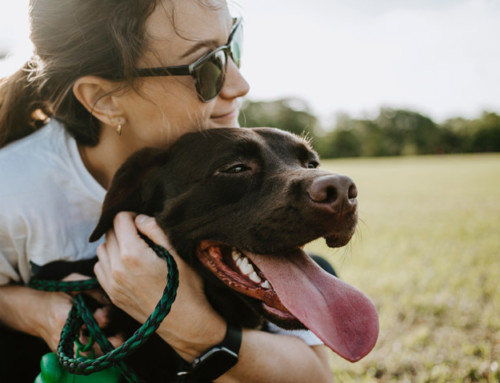Humans know the importance of keeping themselves fit and healthy. Dogs are no different; they need a healthy body weight and good nutrition to maintain their health and fitness.
Is my dog fit and healthy?“You will usually be able to tell at a glance whether your dog is fit and healthy. If they have plenty of energy, that is always a good sign, along with a healthy appetite. And feeding them a nutritionally balanced diet, taking them for daily walks, and to the vet on a regular basis will all help to ensure your dog stays healthy and happy. “ |
It’s the responsibility of the owner to ensure their dog is in good health. Looking after their nutrition and ensuring they get enough exercise is all part of the job of owning a dog. Despite that, many dog owners don’t actually notice when their dogs are putting on an unhealthy amount of weight. Without a scale it’s difficult for owners to keep a regular eye on their dog’s weight, so they tend to go by sight.
Weight gain in dogs
In addition to affecting their mobility and overall quality of life, being overweight can cause significant health risks to your dog. Even a small increase in weight makes your dog more susceptible to the following:
- Type 2 diabetes,
- Heart disease,
- Arthritis,
- Kidney disease, and
- Some cancers.
Some dogs can gain excessive weight if they suffer from a disease or medical condition such as thyroid issues. However, most dogs are simply being fed too much and exercised too little. It’s therefore crucial to implement portion control and regular exercise in a dog’s lifestyle.
How to combat weight gain
If your dog is overweight and you feel they need to cut the calories, you should first speak to your vet about what needs to be done. Even if your dog is not visibly overweight, it’s important to have them checked by a veterinary clinic to assess whether they are at risk of obesity or another underlying condition. There are many types of ‘lite’ or ‘diet’ pet foods available, but it’s still a good idea to double check these with your vet as some may contain harmful ingredients.
When it comes to controlling your pooch’s food portions:
- Try to follow the guidelines for your breed and size of dog. Manufacturers have recommended portions on their packaging, but your vet can help with this too,
- Cut down on the dog treats, as they hide a significant amount of calories. Try and replace those treats with healthier options such as carrots or apples, and
- Resist the urge to feed your dog when you’re eating. They need to be fed as dogs, not as humans, and so the frequency of meals differs. Most experts recommend feeding your dog once in the morning and once at night.
Get some exercise
Exercise is the other vital component in keeping your dog fit and healthy. All dogs require exercise, and some will need it more than others. Dogs that have been bred to pull, dig, or chase, need a way to expend this natural energy they have been bred with. Not providing your dog with sufficient exercise can also cause behavioural problems as they have no way to release their energy and anxiety.
Choosing the right type of exercise is also important, for the sake of both you and your dog. You both need to enjoy the exercise routine, as boredom in either one of you will hinder the motivation and your dog will suffer. Varying your activity and routine are important, and if your dog has much more energy than you do, a simple game of fetch can be a great way to solve this. When teaching a dog to fetch, use physical affirmations instead of edible ones.
Some ideas for exercising your dog include:
- Walking – This is an obvious one, but try to squeeze in walking as often as you can. A daily walk will do good for both you and your dog, and if you find yourself leaving home more frequently than that, take your dog along for those extra little walks
- Hiking – Make a day of it! Australia has plenty of amazing bushwalking tracks, and this is a great place to take your dog for some exercise. Some hikes start in the bush and end on the beach, and this change of environment will be fun for your little pooch who can enjoy some time splashing in the water at the end
- Playing – Take your dog to a local dog park or dog-friendly beach and let them run around enjoying the company of other pups. Playing isn’t restricted to other dogs, however. Have a game of hide-and-seek at home with your dog, or check out YouTube for some good dog games
- Tricks – Teaching your dog how to do tricks will not only teach them some valuable (and fun) skills, but also help them get some exercise! Spend a day teaching your dog some tricks, and then practice these every so often.
Remember, your dog is relying solely on you to ensure that they are well fed and exercised. Don’t neglect your dog’s needs just because you’re tired, as the effects of inactivity and malnutrition can set in very quickly. Remember that regular checkups at the vet are still important, even when you believe that your dog is in prime condition.
Click here to read the story about Dennis the rather overweight Daschund, and more tips to help your pet lose weight. And learn about the benefits of pet insurance for your dog here.







Leave A Comment